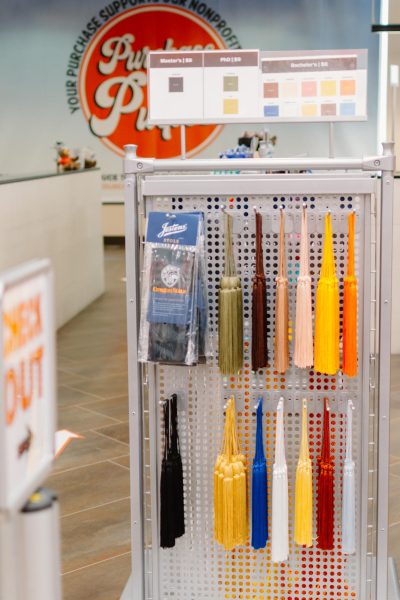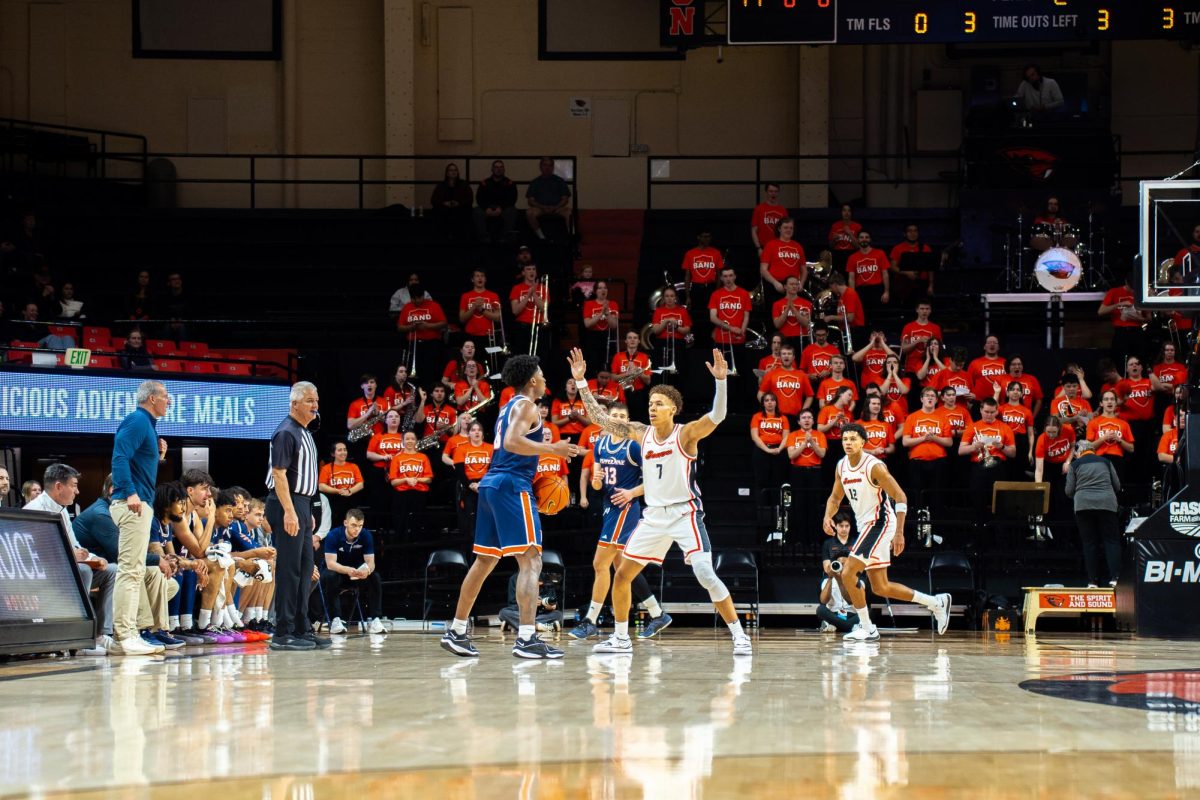Editor’s note: This article mentions Orange Media Network, which The Daily Barometer is a part of.
On graduation days we wear black, but some college cliques get colors.
In nicer language: commencement day will have many students wearing the plain black Oregon State University robes, caps, and stoles, with little color except the orange letters beneath the OSU logo on their sleeves and their tassels on top.
For some students, however, you’ll see a more prevalent wash of color in the form of special graduation cords, stoles, and hoods either offered officially through the Beaver Store, or granted unofficially by student groups.
Kayleen Eng, the OSU director of commencement, said that some Greek houses, international groups and the seven cultural centers at OSU have their own graduation regalia.
Abigail Ketah, a communications representative at the Kaku-Ixt Mana Ina Haws cultural center said that the group has a unique stole—a sash typically worn around a student’s neck at the graduation ceremony.
Liam Murphy, a graduating Civil Engineering student, said they would wear their Phi Beta Kappa Cord for the commencement ceremony.
“It’s purely because it’s the trans colors and I think that’s neat. I couldn’t care less about the organization itself,” Murphy said.
Phi Beta Kappa is an American honor’s society that exclusively offers membership to students with high GPAs at certain colleges.

Orange Media Network also has its own cord for graduating student employees.
The OMN cord is modeled blue and orange after OMN’s current logo and has been provided since the logo was designed in 2016 by Madison Ave Collective, according to Jennifer Moody, the OMN journalism advisor.
The origin of many pieces of graduation garb, according to a 2019 article by Time Magazine, was religious European universities from the middle ages, and primarily served more practical purposes than the ritualized fashion we understand of it nowadays.
Religious students would apparently wear the hoods and robes to protect their bodies, and particularly their shaved heads, from the cold of the drafty, unheated buildings they studied in.
The article also notes that the robes were used to signify religious status and social cohesion and could be stripped from a student as punishment for misbehavior.
Nowadays, the regalia is only really used for graduation ceremonies and photoshoots, as well as marking co-curricular commitments and academic achievements rather than religious devotion.
“The OSU Beaver Store sells (Grade Point Average) Honors Cords to represent specific GPA honors and the (blue) Research Fellowship Cord to honor research fellows,” Eng said. “Graduation cords symbolize specific academic or extracurricular distinctions.”
The official graduation cords all cost $19 on the Beaver Store website, as of writing this article.
The three GPA honors cords come in orange for cum laude graduates with a GPA of 3.50-3.69, gold for magna cum laude graduates with a GPA of 3.70-3.84, and the greatest distinction, white, for summa cum laude graduates with a GPA higher than 3.85.
The standard graduation packages start at $118 for undergraduates on the Beaver Store website, but there are also some unique items sold separately.
The robes come in a range of sizes meant to fit students as short as 4’10 and as tall as 6’9.
Graduate packages for masters students and doctorate students are $147 and $163 respectively.
Some of this other official OSU graduation regalia at the Beaver Store includes a burgundy stole for OSU Honors College graduates and special robes and hoods for graduate students finishing their master’s or doctorate degree.
Some regalia also has biodegradable components, according to the website.
For the celebration, you may even catch some graduates piling up multiple sets of regalia.
“Graduates can wear multiple cords and stoles—it is dependent upon what they represent and specific to the individual,” Eng said.
The basic graduate packages offer 13 tassels specifically colored based on a student’s field of study, as well as a standard, complementary orange and black “souvenir” tassel.

The tassels, which are traditionally hung on the graduation cap mortarboards can also be purchased separately on the Beaver Store website, coming in the following colors and styles.
- Brown for Fine Arts
- Russet for Forestry
- Maize for Agriculture
- White for Liberal Arts
- Royal Blue for the College of Earth, Ocean, and Atmospheric Sciences
- Orange for Engineering
- Light Blue for Education
- Salmon for Public Health
- Drab for Business
- Gold for Science
- Black for Masters Students
- Jumbo Olive for Doctors of Pharmacy Students
- Jumbo Gold for Doctorate Students
“Jumbo” tassels appear to have the same length and breadth as the other tassels, but with a larger tassel head.
The plain black OSU stole can be purchased online for $40, and can come with or without the student’s graduation year stitched in.
Stoles are also sold for half that price with a past year stitched in, giving students the option to complete (or repair) their collection of graduation memorabilia in the future.
The stoles are said to “pay tribute to those who helped you on your journey,” according to the OSU Beaver Store.


















































































































